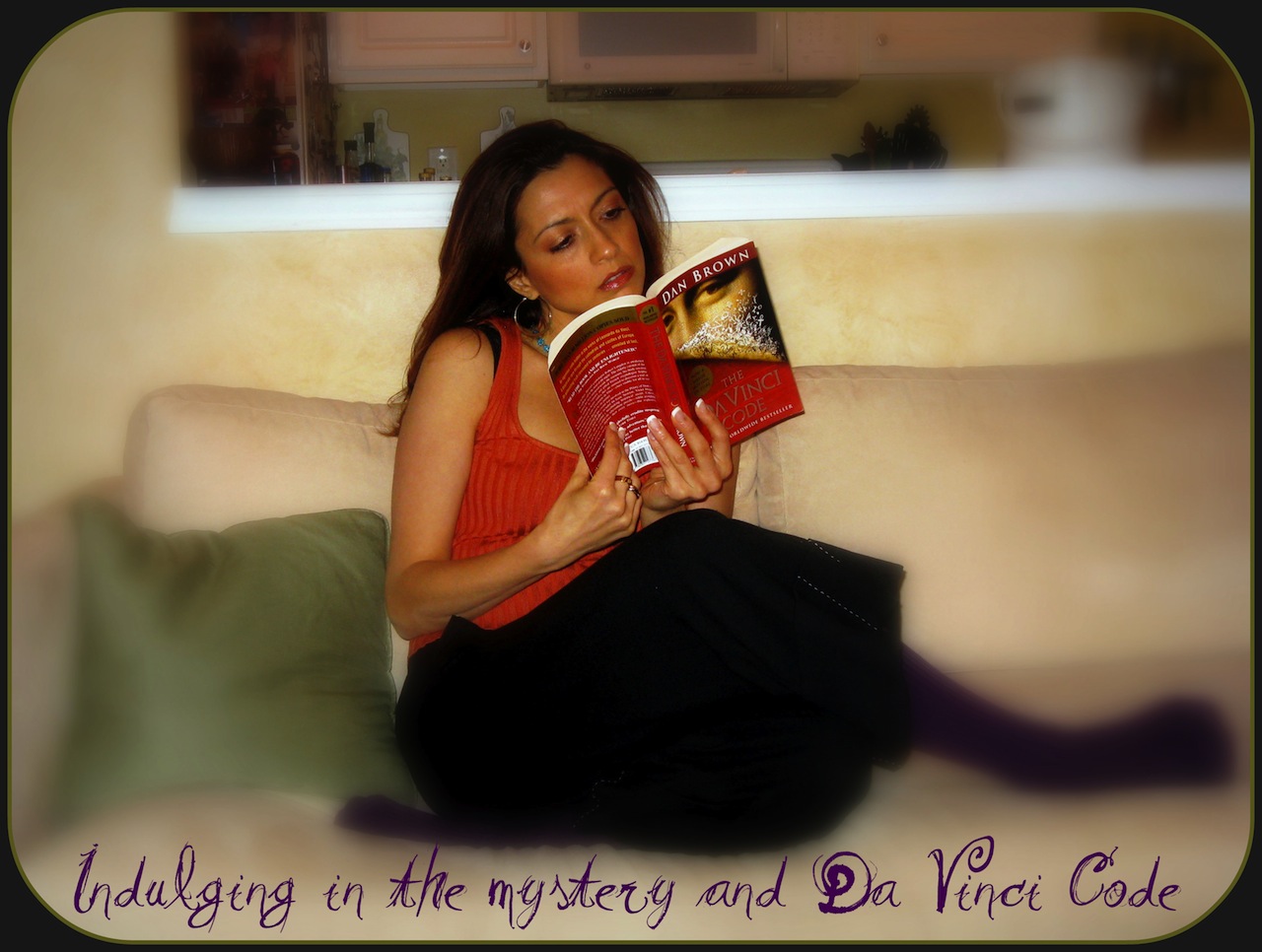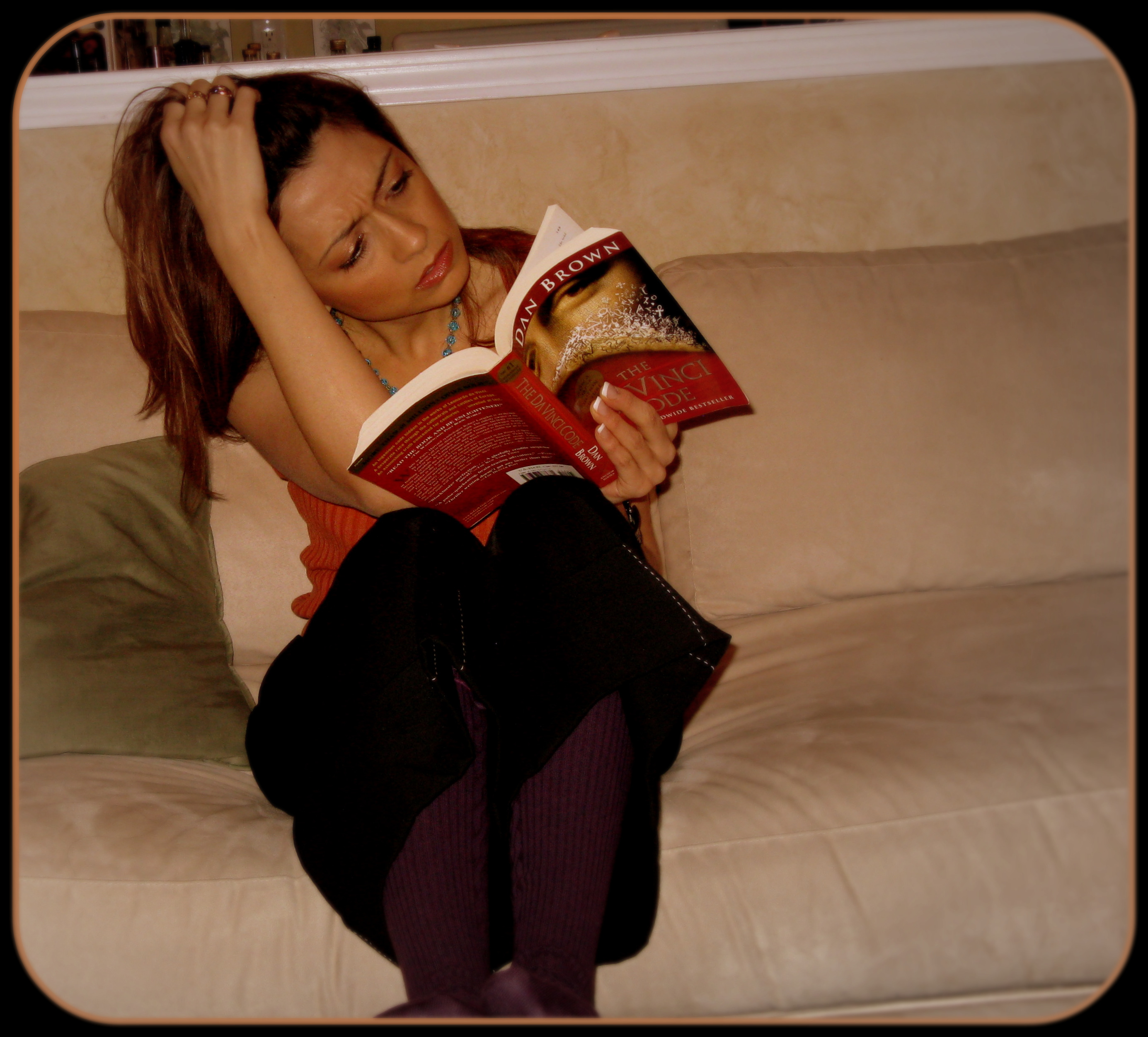
“The Da Vinci code” is pure genius — whether we care to entertain Dan Brown‘s premise on this foundation of Christianity as anything beyond fiction, we must admit that it is a work of a genius that creates not merely a fantastic novel with countless sold copies, but also substantial commotion in the Christian world, matched with equally vast curiosity in the public about topics that are brought to surface by the novel: The Knight’s Templar, the Holy Grail, Mary Magdalene, Royal bloodline, and a secret brotherhood society among the most intellectual minds at the time, Priory of Sion. This book has bravely weaved a new path from the beginning to the present world of Christianity, and in doing so, it has enraged and evoked intense desire for more knowledge on the subject.
Brown’s gifted talent combines a most perfect setting in Paris, the excitement of an authentic story, the element of Christian history, two likable and well-developed characters – the professor of symbology, Dr. Robert Langdon, and the cryptologist, the beautiful French Sophie Neveu – along with conversations in French and superlative writing quality. Pure reading pleasure.
Reading is the best pastime for an active mind! If you like to see the other book reviews, check the index of In Print.
In the title, Da Vinci naturally refers to the true genius of our time, Leonardo da Vinci, and the code builds around the hidden meaning behind the works and mind of Leonardo da Vinci. If he did not have my attention before, he certainly has the full grasp of it now. It was mesmerizing for me to imagine the works of Leonardo da Vinci with the depth of hidden significance that Brown associates to them. The beloved Mona Lisa and her mysterious smile and the timelessness of that expression, lost as it is in a million interpretations and countless allegories, is now endowed with yet another secret. The Last Supper, the phenomenal masterpiece by Da Vinci on the old dining room wall of Milano’s Santa Maria del Grazie church, is mystified with a new identity beside Christ, that of Mary Magdalene. It was a delicious experience to be lost in Dan Brown’s interpretations of Leonardo’s masterpieces.
Perhaps there is a disappointment in every great work of fiction and mine is this with the DaVinci code: Brown paints a rather hypocritical portrayal of the character of Leonardo da Vinci, my favorite figure in all of history and mankind. It is impossible to claim what Leonardo believed to be true with respect to Christianity. He devoted his life and gifted talent to creating eternally beautiful art, portraying Mary and Jesus and the angels in most of his work. Yet he was a scientist at heart; he studied human corpses and the intricate layers of mother nature at the same time. Faith and science do not have to be mutually exclusive, and it would take a genius far above Leonardo himself to claim to understand the complexity of this man and the true nature of thoughts behind his actions.

According to Brown, Leonardo himself belonged to the clandestine brotherhood Priory of Sion, in which all members believed Mary Magdalene to be the wife of Jesus Christ, and in sworn secrecy, they protected this “truth” in the smallest of circles for fear of wrath of the church. These are not small claims even in the work of fiction, and this is no small work of fiction – with Brown’s thorough research and preparedness combined with his authentic imagination shining through every page.
Robert Langdon wakes up in the Ritz Hotel with the news of a murder followed with a vague insinuation of his involvement. In the Louvre, Langdon and Sophie grapple with the first clues slashed across Jacques Sauniere’s body — Oh Draconian Devil, Oh Lame Saint – only to find it a perfect ambigram for Leonardo da Vinci — The Mona Lisa — they race to the site of the painting. Anyone who has visited the Louvre knows this small priceless painting quietly hangs in the grand Salon Carre, a miniature for the enormous wall engulfing it, and yet a presence so real that you tremble in its magnificence. The words scratched on the Mona Lisa — heavens forbid — So Dark the Con of Man — another anagram – lead us to another da Vinci masterpiece — Madonna of the Rocks — and thus to the mysterious key and the brilliant adventures which follow. Soon the object of their search is made apparent to them: The Holy Grail.
Brown brings us back to Leonardo’s The Last Supper, and to my surprise, mistakenly calls this work a fresco – which it is not. It is a well-known fact that, much to the disappointment of the entire world including himself, Leonardo chose not to use the fresco technique on his mural, but rather a new technique he was experimenting with: oil and tempera (egg yolk and vinegar) painting on dry plaster. As a result, the masterpiece which took him 4 painstaking years to complete, started to degenerate in his own lifetime. If we had a fresco in our possession, not only would we not mourn the eventual loss of this masterpiece as it slowly disappears into the wall despite the fortunes spent to restore it, we would also understand more of Brown’s answers about the painting because it would be in pristine condition.
In the Last Supper, Christ does not have a cup – or a chalice – on the table – and the character to the left of him is portrayed as Mary Magdalene. She has feminine features, long hair and a hint of bosom, and is leaning away from Christ upon hearing about the betrayal. The Holy Grail of Dan Brown is none other than Mary Magdalene, the wife of Christ, and the royal bloodline of their offspring. It falls upon our protagonists to locate the Holy Grail – the resting place of Mary Magdalene. As we follow our breathless characters in the streets, churches and museums of Paris and then on to England, we also follow at their tale the monk assassin sent by the Opus Dei, modern day Christian group who must ensure the secret is buried with Langdon and Sophie – and the members from the Priory of Sion, the secret brotherhood which must also protect the Holy Grail from coming to surface.
The evolution of faith and the role of mankind in it are two of the recurring themes in this book. Why has religion formed the way it has, why has the church preferred for men to run and operate its business, and was there perhaps a time where mankind felt threatened – rather than inspired or strengthened – by the intelligence that the female generation could bring to the church, the government, politics and other social arena, so much so as to alter the original path of faith to strictly limit the role of women everywhere for centuries to come? These are the questions we explore deeper with Brown in the course of the novel and the questions that invoke in me the strongest quest for the real truth, if such truth could ever be revealed. With all that Dan Brown has concocted here, I had perhaps the most gratitude for the authentic imagination which openly asks those questions.
 I am Farnoosh, the founder of Prolific Living. So glad you are here. My mission is to empower you to unblock your creative genius to live your dream life.
I am Farnoosh, the founder of Prolific Living. So glad you are here. My mission is to empower you to unblock your creative genius to live your dream life.